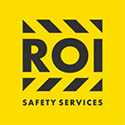
We GUARANTEE we will match anyone’s price and beat it by 10%!
We GUARANTEE we will match anyone’s price and beat it by 10%!


Industrial operations like warehouses, construction sites, and factories rely heavily on forklifts to keep their wheels of progress turning. Although they ease heavy load handling, forklifts come with a huge commitment to safety and a ton of potential risks at workplaces. Therefore, it’s the responsibility of the forklift operator to ensure safety protocols are always adhered to.
This article gives novice and expert operators safety tips for forklift operations to protect themselves and their workmates. Here are ways of maintaining safety during forklift operations:
Trained operators with proper certifications and licenses are less likely to cause forklift-related accidents. An operator should have adequate knowledge of forklift operation in various terrains and safety requirements. On the other hand, employers should offer refresher courses to ensure operators are up to date with the latest OSHA safety standards and requirements.
Comprehensive training should equip an operator with the knowledge and practical skills to handle a forklift safely. A certified operator should know proper techniques, loading and offloading tactics, inspection and maintenance, controls, and emergency practices. Regular training and practice boost employees’ confidence in machine handling and increase productivity.
It’s imperative to thoroughly inspect these powerful machines before setting off. An operator should identify faulty parts like breaks and lights, or any wear and tear that need fixing before the forklift is fit to operate. According to OSHA, conducting forklift operations pre-checks significantly reduces the chances of mechanical failure accidents mid-operations.
What to look for during the pre-operational inspection:
Employers should ensure forklifts are inspected for faults, appropriately repaired, and serviced regularly to prevent machine malfunctions during operations. Wear and tear can easily cause accidents resulting in severe injuries and even deaths in cases where brake systems fail or other mechanical errors.
Regular forklift maintenance reduces operational costs by ensuring safe and smooth load movements while also prolonging the lifespan of a machine.
Stability and balance of loads are key when operating forklifts. Following OSHA safety practices, proper loading ensures easy movement of heavy items on a ramp, narrow or crowded pathways, rough terrains, and slopes.
As an operator, you must ensure the load is facing the right direction, maximum load capacity is maintained, and proper load distribution techniques are strictly followed. Failure to do these can result in structural damage, loss of control, and tip-overs.
Loading and offloading require precision and skills to avoid accidents like tipping over or equipment damage. Avoid carrying staff on the forklift; it is meant for goods only.
Maintain the set speed limits per your workplace regulations and avoid abrupt stops. Operating at a reasonable speed allows you to adjust velocity according to the terrain, making sudden stops less damaging and more controllable. As an operator, it’s necessary to know the forklift controls and operations in detail to prevent operator-related accidents.
An operator should know safe maneuvering techniques, especially when faced with unexpected obstacles and blind spots. They should maintain speed and load limits, clear visibility lines, proper machine loading to avoid obscuring vision, and caution when rounding corners and turns.
Most factories use floor-marking systems to enhance safety in the workplace. Using yellow paint makers helps with visibility from a distance, especially in blind spots and places with physical hazards like fire equipment. Making designated paths and zones for forklifts and pedestrians improves traffic flow, ensuring maximum safety and efficiency in the workplace.
Signal indicators are essential in environments bustling with activities. In addition, operators should communicate properly using horns and lights with pedestrians and other forklift operators while maintaining the right of way to prevent accidental collisions, particularly in blind spots. You should also operate the forklift at a safe distance from pedestrians and other machinery.
Your shift as a forklift operator ends when you have shut down the machine properly and parked it in the designated zone (avoid blocking pathways and entrances). The forks should be fully lowered to the floor and with engaged parking brakes. Don’t forget to cut the engines and extract keys. Ensure the loads are stabilized when parking to avoid sudden topples if left unattended.
Parking in authorized zones makes it easier to operate forklifts when required, removes obstructions from other working areas, and reduces collision chances with severe accidents. Do a quick walk-around inspection to ensure all is in order.
Industries have increasingly eased heavy work by incorporating forklifts into daily operations. Every employer or operator using forklifts must follow the OSHA safety guidelines to keep themselves and those around them safe. The above safety tips ensure an operator has the necessary knowledge while operating a forklift.
We at ROI Safety Services offer comprehensive forklift operation refresher courses to ensure your team, operators, and other workers are up to date with the OSHA safety requirements. Contact us, and our experienced experts will meet your safety training needs.
